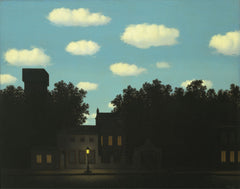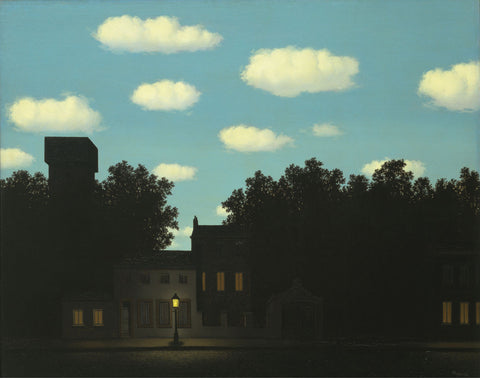René Magritte was born in Lessines, Belguim, and studied at the Académie des Beaux-Arts in Brussels.
In 1922 Magritte married Georgette Berger, who became his inspiration and favorite model. Magritte worked as a commercial artist until 1926, when he began to devote himself completely to painting.
In 1927 Magritte and his wife moved to Paris where he became involved with the Surrealists, befriending André Breton and Paul Eluard. He also began combining words and images in his paintings with the intention of shaking our perception of reality and of representational art. The best-known example of this is probably Treachery of Images (1929): This is not a pipe.
During the 1930s Magritte survived the pervasive economic depression by moving back to Brussels and pursuing commercial art again. At the same time, his work was exhibited in a number of Surrealist shows in London, New York and Paris. By this time he had already developed the meticulous realistic style that would become his trademark, though his subject matter evolved over time.
Magritte continued to live and paint in Brussels for the rest of his life. In 1956 Magritte was awarded the Guggenheim Foundation artist's fellowship. In 1965 the Museum of Modern Art in New York City held a large retrospective of his work. Magritte died in Brussels two years later.



